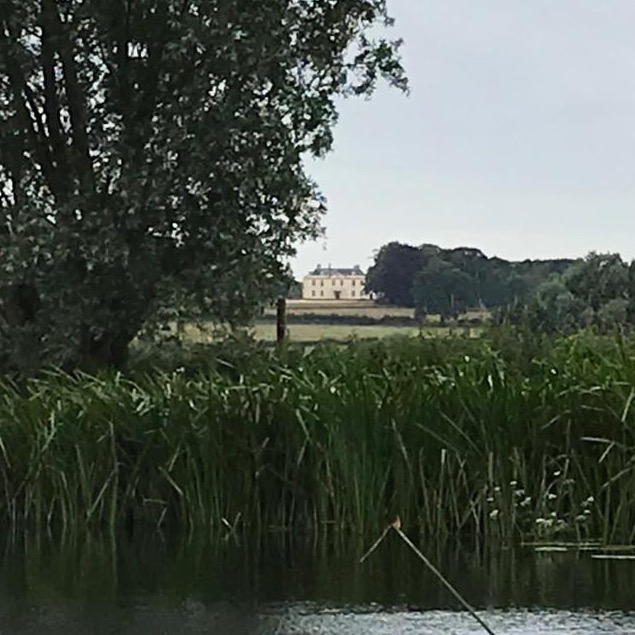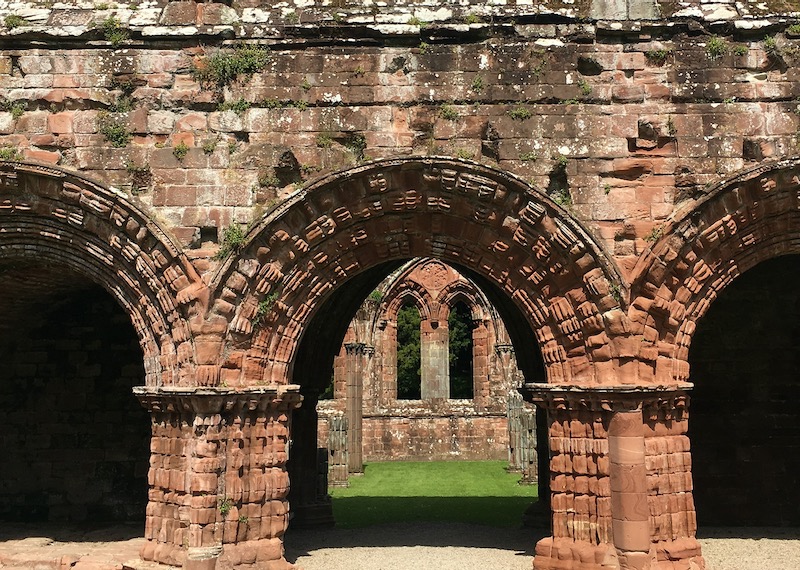Furness Abbey in the far west of Cumbria has some of finest monastic ruins in England. I’ve spent a significant part of the past decade researching the history, art and architecture of this major medieval monastery. I was therefore delighted that it was among the 41 English Heritage properties that reopened their doors to visitors last weekend after closure during the lockdown.
The abbey’s history is rich enough to appeal to scholars and the general public alike, encompassing 400 years of pious prayer, saintly visions and pilgrimage as well as scandal, such the murder of an abbot and a former monk who turned his hand to piracy.
A theme throughout Furness’s often-turbulent history is how central the abbey was to the lives of people in its remote locality. The monastery spoke to and addressed the most fundamental spiritual and physical needs of individuals at all levels of medieval society. To this day the abbey continues to play a unifying role in a region with more than its fair share of challenges and hardship.
The history of the abbey of Our Lady of Furness stretches back almost 900 years and the monastery founded near Preston in 1124 by the future King Stephen. Three years later, the monks moved to ‘the Vale of Nightshade’ on the Furness Peninsula.
I for one can readily understand what attracted the monks to this deep, wooded valley. It still feels secluded, or “far from the concourse of men” as they’d have said in the Middle Ages. It’s easy to forget that the shipbuilding town of Barrow-in-Furness is only a few miles away.
The abbey was originally affiliated to a small reforming order called the Savignacs. But in the middle of the 12th century, all Savignac monasteries, Furness included, were absorbed into the austere Cistercians Order, the most successful monastic reform movement of the Middle Ages.
Furness rapidly prospered, attracting monks of talent, learning and holiness. It also received gifts from people in all three ranks of medieval society: those who prayed, those who fought and those who worked.
Successive Popes lavished privileges on the monastery and several bishops of Sodor and Man were buried there. In the abbey’s museum are sculpted effigies that once adorned the tombs of knights and ladies, witness to the desire of nobles to be buried within the walls of this major monastery in the hope it would hasten the passage of their sin-stained souls through the pains of Purgatory.

Peasants, townsfolk and humble parish clergy also turned to the Furness monks for their spiritual salvation. Their small grants of lands were frequently accompanied by a request for burial within the abbey’s cemetery – as one 13th-century charter put it for “six or seven feet of earth where my bones may lie.” Other gifts paid for the purchase of beeswax candles to burn before altars and during High Mass. Membership of the abbey’s “confraternity” or brotherhood was a much sought after privilege, open both to men and women.
The monastery’s remoteness and proximity to the Scottish border, a region soaked in blood, meant that its abbot had extraordinary feudal powers. He even commanded an armed retinue and had a castle on nearby Piel Island.
Furness was the richest and largest monastery in northwest England. Most of its wealth came from its vast estates. The abbots of Furness extracted every last farthing of income from their lands and could he hard, gasping, even violent landlords. The records of local courts are peppered with acrimonious proceedings between the monastery and its tenants.
But there was also a more positive side to their relationship. Furness distributed a generous weekly allowance of bread and ale to its tenants. They had the right to smelt metal at the abbey’s smithy. Their boys received a free education at the abbey’s grammar and song schools; then as now education was the key to social mobility and lads from the abbey’s locality went on to occupy high-ranking positions in the Church and Court.
Furness also had a reputation for generous hospitality and charity, the social services of the day. Charity was dispensed at its gates, including a dole in memory of the founder, King Stephen. The abbey had an almshouse where 13 poor men were housed, clothed and fed and Furness also provided sustenance to eight destitute widows.
Approximately 100 servants derived an income from the abbey, making it one of the most important employers in the region. Those on the payroll would’ve ranged from the gentleman stewards and lawyers of the abbot’s household through to stonemasons, cowhands and washerwomen.
Monastic life at Furness came to an abrupt end in 1537 during Henry VIII’s Dissolution of the Monasteries. Its charitable provision ceased overnight and was recalled with fondness and nostalgia 50 years later by a former tenant.
But Henry’s commissioners could see the suppression of the abbey was likely to cause real hardship in its locality, fuelling discontent in a region that was far from happy with the direction of the King’s religious reforms. They therefore made concerted efforts to secure leases and employment for the abbey’s displaced tenants and servants, and locals were given priority when the abbey’s cattle were sold.
Furness’s spiritual significance didn’t end with the Reformation. A manor house on the abbey’s site became the seat of the Preston family. Prominent recusants, their mansion was a centre for the local Catholic community at a time of persecution and penalty. In the 19th and 20th centuries, the abbey provided an identity to the burgeoning population of Irish Catholic immigrants in Barrow and nearby towns. Mass was celebrated amidst its ruins.
The religious appeal of the site crossed confessional divides. In the early years of the 20th century, John Laing, a committed evangelical, prayed at the abbey, finding inspiration to save his troubled construction company. In thanks, Laing subsequently gave away most of his wealth to charity.
The abbey retains strong links with its local community to this day, including schools, hospitals and charities. The volunteers of the Furness Abbey Fellowship organise events to promote the monastery and its history.
Furness is well worth a visit. I’ll bet you’ll come away enriched by the experience. I know it touched my soul.



 Loading ...
Loading ...
What do you think?
You can post as a subscriber user ...
User comments (0)